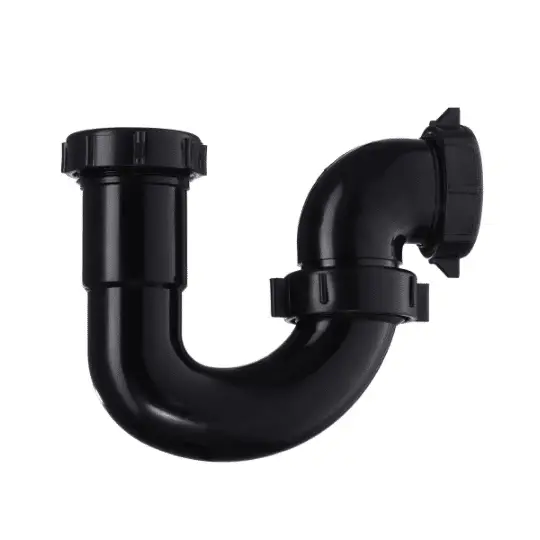Many homemakers hate doing laundry, yet it is something that has to be done regularly. With that being said, the washing machine is sometimes the most unappreciated household item. However, this all changes the day one finds one’s washer machine drain backing up.
Without a functioning washing machine, those laundry chores will become a nightmare. So it’s best to appreciate one’s washing machine and know what to do if a problem occurs.
There can be several reasons why your washing machine is not draining water or leaking. First, it might be a problem with the washer itself. In this case it has nothing to do with the main drainage line backing up.
A washer machine drain backing up problem is most likely linked to plumbing issues.
Either way, by understanding the symptoms of both, you can figure out the cause and reach for the right solution.
The Washing Machine Is Malfunctioning

When the washing machine cycle is finished, there should not be any water left in the drum. However, if you find that water does not drain out of the drum, the washing machine is most likely malfunctioning. [1] Here is some things you can do to fix the problem:
Perform A Master Reset

If you have a newer model, then a master reset might work. First, you will have to unplug the washer for a minute. Next, you need to plug the appliance back in and open the door six times in 12 seconds. This will tell the computer to perform a reset.[2] Unfortunately, this will not work for all, but it is a quick fix if yours is compatible with the technique.
Test The Lid Switch Assembly
If you have a top-loading washer, then it will only drain if the lid is closed securely. If, however, your lid is defective, it will cause problems. You can try to press the lid switch with your fingers and see if the machine responds. If it does drain, then voila, problem solved! After that, you might only need to extend the stem located on the lid to ensure it presses down on the switch.
Inspect The Drain Hose
It might be that your drain hose is kinked. This will result in water not draining from the drum. Therefore, check the hose that is responsible for draining the water from the washing machine. If it is bent in any way, try to unbend it and drain the washing machine. [3]
Check For Clogs In The Pump

Socks or small pieces of clothes can easily land in the drain system of the washing. This will clog the hose or pump. By removing the washer’s front panel, you will be able to see if any obstruction is in these areas. If there is something in the way, remove it and try to drain the water again.
When you check the washer’s hose, make sure to scoop out as much water if you have a top loader. Once you disconnect the hose, the water from the washer will come pouring out. Therefore this might be a messy solution if you have a front loader. Either way, once you pull out the obstruction, your washing machine should be able to drain.
Clean The Coin Trap
If your washer has a coin trap that catches objects before they flow into the drain, it might be clogged. You will notice a panel on your washing machine for easy access. Once you located the coin trap, clean it out and see if the washer drains.
Inspect The Water Level Control
If the water level control is faulty, it will prevent the washer from spinning or draining. [5] To investigate the possible issue, open the machine’s control panel. Here you should notice a plastic tube attached to the water level valve.
You can clear it out with vinegar if it is clogged. However, if the valve is corroded, it will need replacing.
Schedule Washing Machine Repair
If none of these troubleshooting methods work, there might be other problems. For example, the water pump or drive belt might be broken. In such a case, you will have to call a professional for repairs or replacements.
Washer Machine Drain Backing
If you notice water is backing up in the pipes, then the problem is not with the washer itself. The washer connects to your home’s plumbing system through the lines and hoses of the washing machine drain box. If the water does not drain at this connection, then the cause might be plumbing issues. Several things can cause plumbing issues. Therefore you will first have to identify the source and cause of the plumbing issue.
The Washer Shares A Drain With The Kitchen
It is common in many homes that the washer and kitchen appliances drain through the same pipe. Sometimes food and grease can build up in the pipe, which slows the water flow. If this problem continues, it can get so bad that the flow will stop altogether.
As a result, the washer machine drain backing up becomes a problem as well.
The water might back up in the kitchen sink while a load of laundry is in cycle. This can also cause the bathtub to fill with water. If you notice either case, it means that the drain line is clogged. You can either try drain cleaning methods or call a professional to unclog the drain.
Preventive methods should always be kept in mind. For example, you can avoid the washer machine drain backing up by not dumping food and grease down drain. Another preventative method you can use is to clean the drain pipes with enzyme products regularly. This will remove minor blockages and minimize the chances of drain clogs. However, keep in mind the enzymes will not clear out serious clogs.
The Capacity Of Washer Water Is Too Much
If the amount of water is too much for the drain capacity, it will result in the washer machine drain backing up. Additionally, you might see the washing machine drain pipe leaking or the washing machine drain pipe overflowing. These are sure signs that the drainpipe is too small.
Most modern washers are designed for 2-inch drain lines. These washers will not function properly if you have an older home with a 1½-inch washing machine drain line. In this case, you will have to call in a plumber to find the best solution for your drain line.
You House Has Cast-Iron Pipes
Cast-iron pipes are primarily present in older homes. [6] The problem with pipes like these is that they can build up sludge and rust when they are not in use. So if you are away from home for an extended period, it may cause the washer machine drain backing up. The only way to fix the problem is to clean out the pipes. For a more long-term solution, it might be best to have the pipes replaced.
The P-trap Is Clogged

The p-trap is the area of the pipe behind the wall in the shape of a U. The p-trap has several purposes, of which one is to help prevent clogs. As water flows through this pipe section, debris like sand or lint will sink to the bottom. This prevents debris from clogging the pipe further down the line. However, when the p-trap gets filled up, it clogs, causing the washing machine to back up as well.
When you notice water under the washing machine but no other symptoms mentioned above, this is most likely the problem. Again, a licensed professional will be able to clear the p-trap for you.
Washing Machine Drainage Options
If you often find your washer machine drain backing up, you might want to rethink your washing machine drain options. If your current drainage option is not working correctly, then you will run into many problems. Here are some washing machine drainage options to consider:
Make Use Of A Laundry Tub
A laundry tub is one of the best drainage options for a washing machine. It requires a drain hose which is located above the ground, about 25 – 30 inches. Below 12-18 inches, the laundry tub will get into work.
In other words, when your washing machine drains the water, the water will run into the laundry tub. In this way, you can prevent large particles from entering your pipes and prevent clogs. Most premium washing manufacturers recommend this type of setup specification.
Install A Standpipe
Another option is to install a standpipe for your washing machine. It is a vertical piece of pipe that consists of an elbow on the bottom. The purpose of a standpipe is to keep the washing machine’s water level below that of the drain. This will prevent siphoning from the drain or sewer line back into the washing machine. A standpipe is an excellent washing machine drain hose backflow prevention.
Underground Pipe Connection
Another excellent option for drainage work is an underground pipe connection. However, keep in mind that this is also the most expensive option. This setup will also require a standpipe, but a part of the pipe will go underground. In general, the pipe will be connected with the washing machine under the floor. The water will then be pushed out of the house to your wastewater storage.
Conclusion
As you can see, if you find your washer machine drain backing up, there can be a couple of reasons. Nonetheless, if you analyze the symptoms, you can quickly find the cause and fix the problem. To avoid a problem like this in the future, it is vital to obtain proper drain maintenance. Another option, of course, is to have a professional install an adequate drainage system for your washing machine.

Michael Davis is a heating & plumbing expert who currently works as independent contractor in SC. He also writes for Plumbertip.
For almost 10 years he worked on various plumbing tasks across South Carolina.


